Related Research Articles

The falcons and caracaras are around 65 species of diurnal birds of prey that make up the family Falconidae. The family likely originated in South America during the Paleocene and is divided into three subfamilies: Herpetotherinae, which includes the laughing falcon and forest falcons; Polyborinae, which includes the spot-winged falconet and the caracaras; and Falconinae, the falcons and kestrels (Falco) and falconets (Microhierax).

Herons are long-legged, long-necked, freshwater and coastal birds in the family Ardeidae, with 72 recognised species, some of which are referred to as egrets or bitterns rather than herons. Members of the genera Botaurus and Ixobrychus are referred to as bitterns, and, together with the zigzag heron, or zigzag bittern, in the monotypic genus Zebrilus, form a monophyletic group within the Ardeidae. Egrets do not form a biologically distinct group from herons, and tend to be named differently because they are mainly white or have decorative plumes in breeding plumage. Herons, by evolutionary adaptation, have long beaks.

The great egret (Ardea alba), also known as the common egret, large egret, or great white egret or great white heron, is a large, widely distributed egret. The four subspecies are found in Asia, Africa, the Americas, and southern Europe. Recently it is also spreading to more northern areas of Europe. Distributed across most of the tropical and warmer temperate regions of the world, it builds tree nests in colonies close to water.
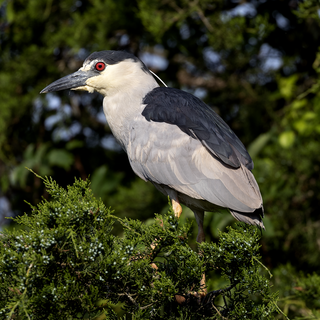
The black-crowned night-heron, or black-capped night-heron, commonly shortened to just night-heron in Eurasia, is a medium-sized heron found throughout a large part of the world, including parts of Europe, Asia, and North and South America. In Australasia it is replaced by the closely related nankeen night-heron, with which it has hybridized in the area of contact.

The little egret is a species of small heron in the family Ardeidae. It is a white bird with a slender black beak, long black legs and, in the western race, yellow feet. As an aquatic bird, it feeds in shallow water and on land, consuming a variety of small creatures. It breeds colonially, often with other species of water birds, making a platform nest of sticks in a tree, bush or reed bed. A clutch of three to five bluish-green eggs is laid and incubated by both parents for about three weeks. The young fledge at about six weeks of age.
The British Ornithologists' Union (BOU) aims to encourage the study of birds (ornithology) around the world in order to understand their biology and aid their conservation. The BOU was founded in 1858 by Professor Alfred Newton, Henry Baker Tristram and other scientists. Its quarterly journal, Ibis, has been published continuously since 1859.

The International Ornithologists' Union (IOU) is an international organization for the promotion of ornithology. It links basic and applied research and nurtures education and outreach activities. Specifically, the IOU organizes and funds global congresses on ornithology at regular intervals, sets up and supports commissions and committees on various aspects of avian biology and conservation, and initiates and backs other international ornithological activities with specific aims consistent with its own mission and goal. It discloses the names and professional affiliations of its members on its website to encourage international collaboration and networking. The IOU acts as the Ornithology Section of the IUBS.
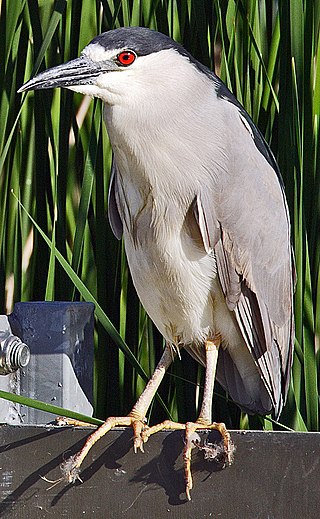
Nycticorax is a genus of night herons. The name Nycticorax means "night raven" and derives from the Ancient Greek νύκτος, nuktos "night" and κοραξ, korax, "raven". It refers to the largely nocturnal feeding habits of this group of birds, and the croaking crow-like call of the best known species, the black-crowned night heron.

Gorsachius is a genus of Old World night herons typically found near water in forested regions. These are medium-sized herons which are migratory in the colder parts of their ranges, but otherwise resident. They are the least known, most strictly nocturnal, smallest and overall rarest night herons.
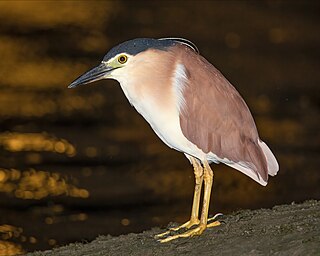
The nankeen night heron is a heron that belongs to the genus Nycticorax and the family Ardeidae. Due to its distinctive reddish-brown colour, it is also commonly referred to as the rufous night heron. It is primarily nocturnal and is observed in a broad range of habitats, including forests, meadows, shores, reefs, marshes, grasslands, and swamps. The species is 55 to 65 cm in length, with rich cinnamon upperparts and white underparts. The nankeen night heron has a stable population size, and is classified as a species of least concern by the International Union for Conservation of Nature (IUCN).

Egretta is a genus of medium-sized herons, mostly breeding in warmer climates.

Sir Hugh Francis Ivo Elliott, 3rd Baronet, OBE was an eminent British conservationist, ornithologist and colonial civil servant.
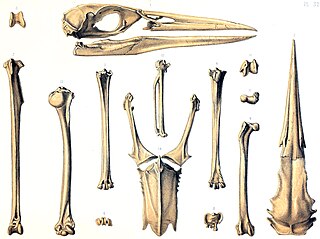
The Rodrigues night heron is an extinct species of heron that was endemic to the Mascarene island of Rodrigues in the Indian Ocean. The species was first mentioned as "bitterns" in two accounts from 1691–1693 and 1725–1726, and these were correlated with subfossil remains found and described in the latter part of the 19th century. The bones showed that the bird was a heron, first named Ardea megacephala in 1873, but moved to the night heron genus Nycticorax in 1879 after more remains were described. The specific name megacephala is Greek for "great-headed". Two related extinct species from the other Mascarene islands have also been identified from accounts and remains: the Mauritius night heron and the Réunion night heron.

The genus Cathartes includes medium-sized to large carrion-feeding birds in the New World vulture (Cathartidae) family. The three extant species currently classified in this genus occur widely in the Americas. There is one extinct species known from the Quaternary of Cuba.

The white-backed night heron is a species of medium-sized heron in the family Ardeidae, found in sub-Saharan Africa.
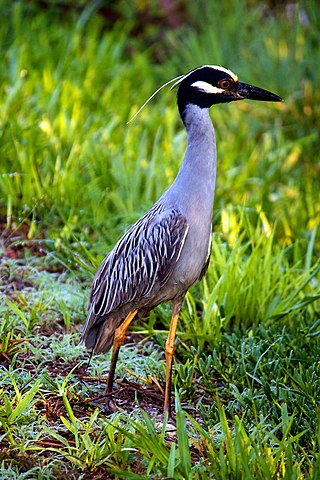
Nyctanassa is a genus of night herons from the Americas, especially warmer coastal regions. They were formerly included in the genus Nycticorax, but today all major authorities recognize them as different.

Birds of the World: Recommended English Names is a paperback book written by Frank Gill and Minturn Wright on behalf of the International Ornithologists' Union. The book is an attempt to produce a standardized set of English names for all bird species and is the product of a project set in motion at the 1990 International Ornithological Congress. It is supplemented by a website, the IOC World Bird List, giving updates to the published material.
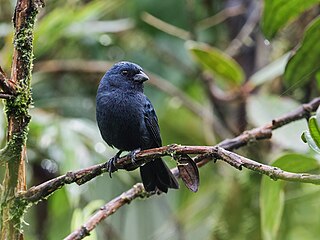
The Ecuadorian seedeater is a species of bird in the cardinal family Cardinalidae that the International Ornithological Committee (IOC) accepted as a species in 2015. It is found in the Andes in southwestern Colombia through Ecuador to northern Peru.

In the United Kingdom, raptor persecution is a crime against wildlife. The offence includes poisoning, shooting, trapping, and nest destruction or disturbance of birds of prey.
References
- ↑ "BOU to adopt IOC World Bird List". British Ornithologists' Union. 20 January 2017. Retrieved 28 January 2017.
- ↑ "Farewell to IJFL". British Birds . 110: 76. February 2017.
- ↑ Carrington, Damian (2 August 2017). "'Incredible': night herons breed for first time in UK". The Guardian. Retrieved 4 August 2017.
- 1 2 Anon (Winter 2018). "Birdcrime reveals persecution". Nature's Home. p. 38.